The best membrane keyboards 2025
You don't need to break the bank to pick up key gaming features
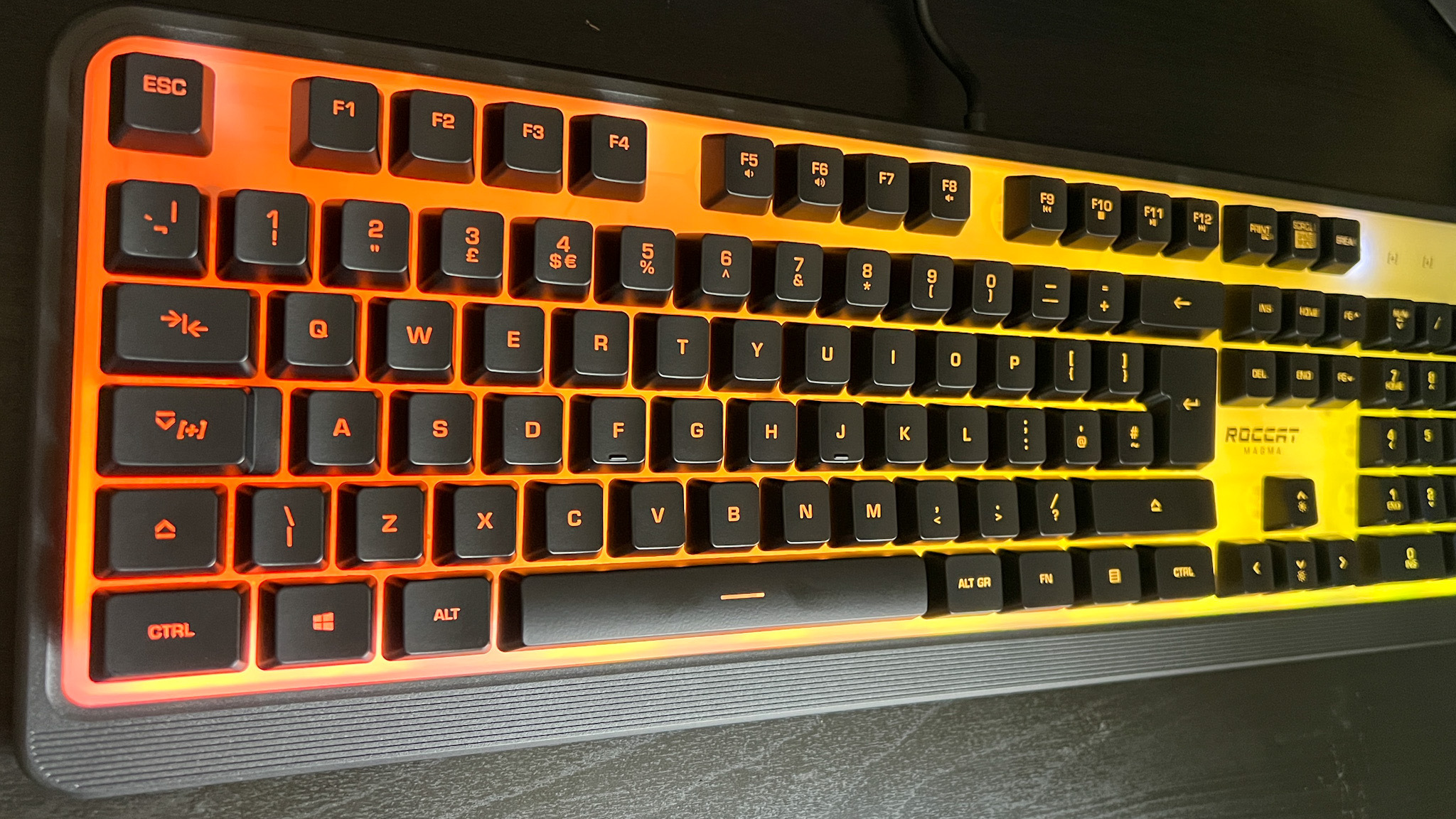
If you're keen to save on your setup, the best membrane keyboards can help you stay nimble on the battlefield without breaking the bank. These decks won't hold up to their premium mechanical siblings, but with considerably lower price points and all the extra gaming features you could expect from more expensive models there's plenty to love here. The main sacrifice for that lower price point is the feel of each key. While a little heavier and generally less smooth than mechanical decks, though, the absolute best membrane keyboards on the market still manage to pack a satisfying punch.
Our reviewers have had their hands on a wide range of membrane gaming keyboards, covering brands from SteelSeries to Razer, Corsair to Roccat. With some being considered some of the best gaming keyboards on the market during their time. Set against a backdrop of some seriously impressive decks, these keys still hold out well.
Each model is put through a series of strenuous tests to make it here. Our reviewers live with every keyboard that crosses their desks for weeks, if not months. Through work days, evening PC sessions, and stress-tests, we watch for durability, speed, ease of use, and comfort to make sure we're recommending the best of the bunch.
The quick list
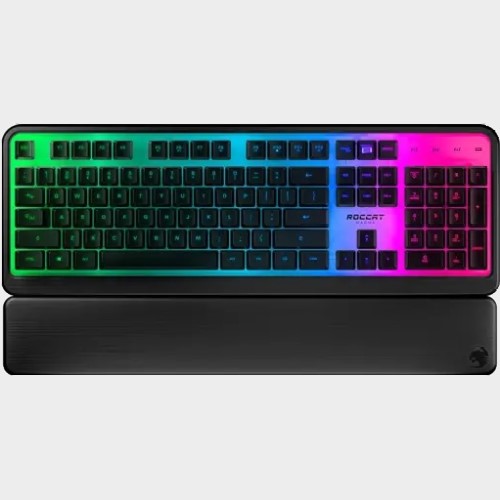
Best overall
The Roccat Magma still feels smooth and satisfying, while offering a unique underglow RGB effect - all with extra macro functionality.
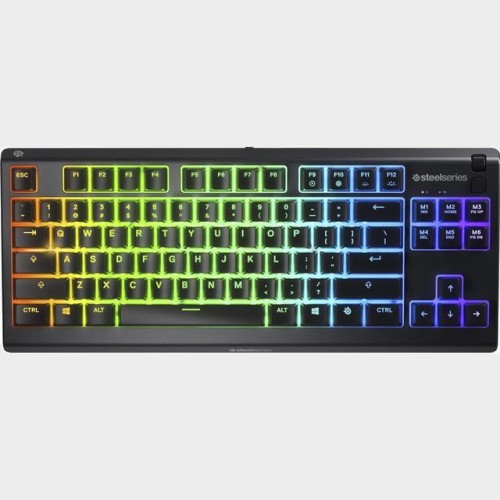
Best TKL
While the keys are a little heavier, you're getting plenty of RGB effects and on the fly macro settings in this cheaper package.
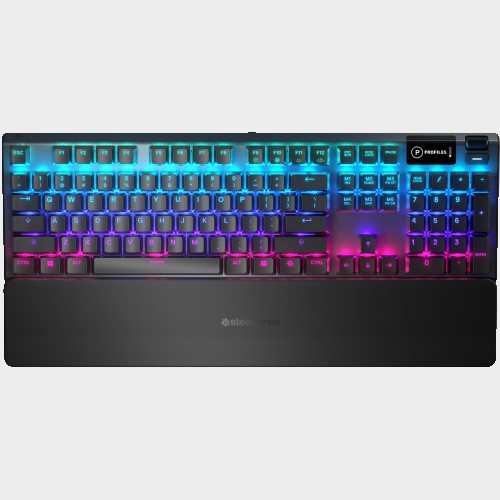
Best mecha-membrane
If you want something snappier, the clicky hybrid switches in the Apex 5 are particularly satisfying, all in a slimline chassis.

Best RGB
Super bright per-key RGB lighting elevates the whole Razer Cynosa V2 experience with crisp LEDs and a solid software offering.

Best macros
If you're after additional macro functionality in a membrane keyboard the Corsair K55 RGB pro offers plenty with a great build quality.

My first ever gaming keyboard was a super cheap membrane deck by Logitech - in fact most of my first setup was budget-minded. Since then I've been lucky enough to test the latest and greatest gaming keyboards on the market, spending the last four years reviewing decks at GamesRadar+. I've always kept that eye for value, though, regularly returning to these cheaper options.
The best membrane keyboard overall
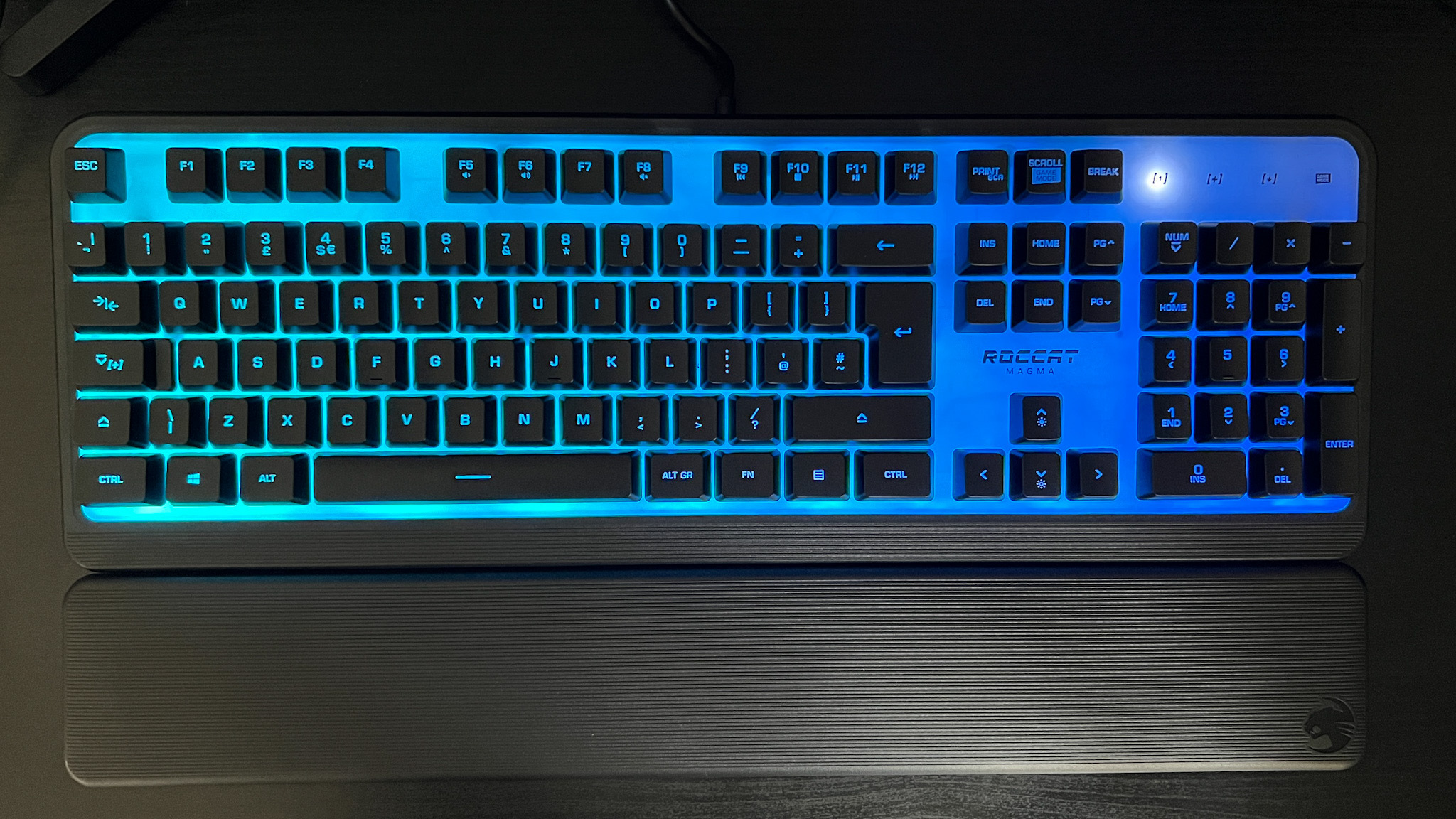


Specifications
Reasons to buy
Reasons to avoid
The Roccat Magma is my top pick for the best membrane keyboard on the market right now. Between a unique RGB color system, a whole second layer of macro options, and a feel of genuine quality in each keypress, the Magma impressed in my testing. There's still more weight under each press when compared with a mechanical deck, but set against the membrane keyboard backdrop, this is a particularly satisfying model.
Thanks to a distinctive panel with RGB lighting sitting underneath the main board, the Magma cleverly disguises a drop in aesthetic customization options with a replacement effect that some may even prefer.
Roccat Magma review
There's just enough resistance to ensure typing is comfortable yet tactile, and you'll still be able to tap away in a QTE without having to fight against a heavier actuation force. That's what makes the Magma so special - I was able to spend all day typing on these membrane keys, something we would struggle to achieve without fatigue on other options.
On top of that smooth experience, you're getting a full-sized deck with customizable RGB lighting and programmable macros for under $50 / £50. Membrane decks are cheap, but that's still excellent - even in this arena. You'll also find a detachable wrist rest included in that cost as well.
This is an all-rounder, perfect for anyone looking to spend a little more than bargain-bucket prices and still come away with solid value.
Read more: Roccat Magma review
The best TKL membrane keyboard
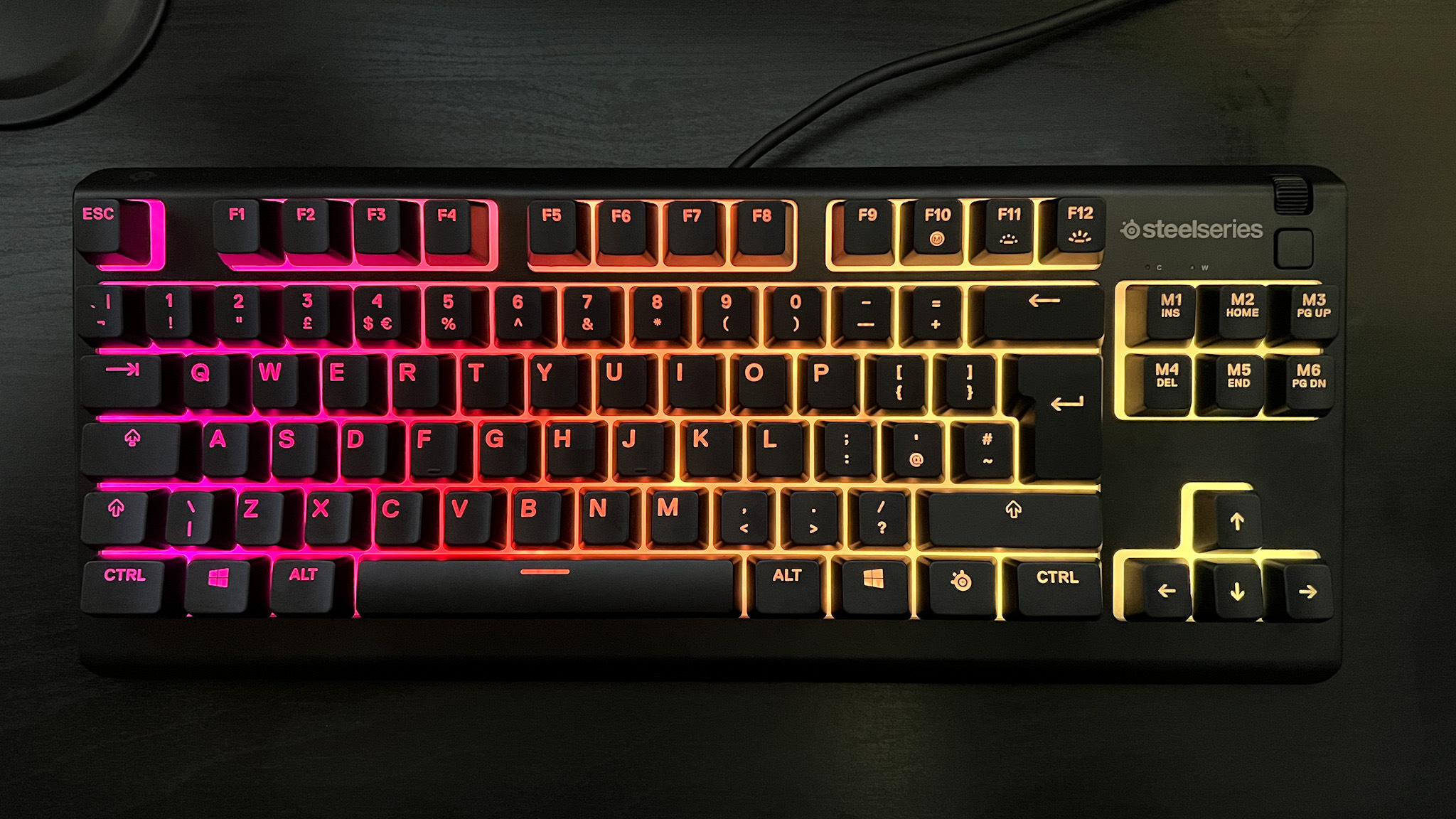

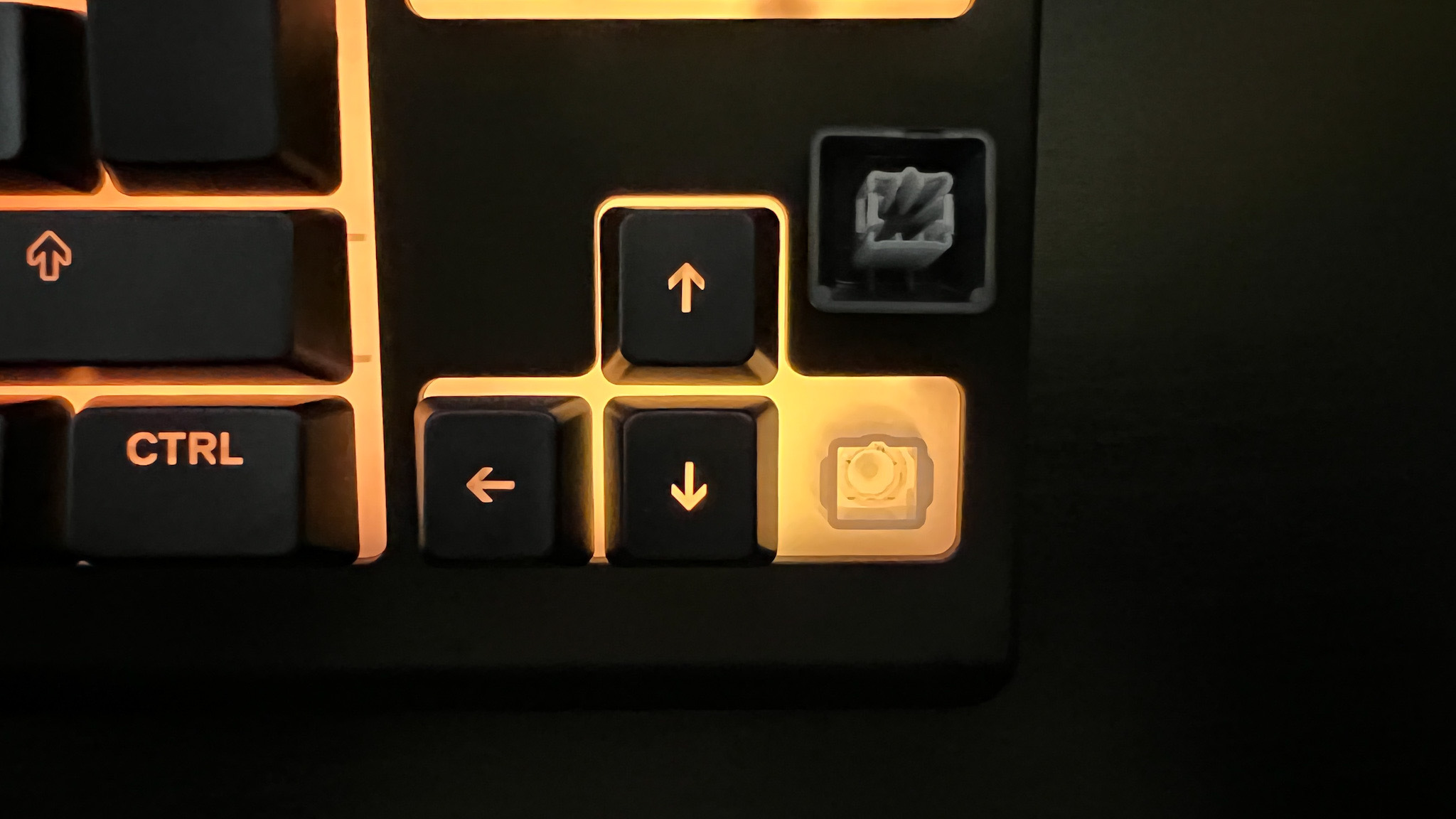
Specifications
Reasons to buy
Reasons to avoid
If you're looking to save some space on your desktop, I'd recommend checking out the SteelSeries Apex 3 TKL. Smaller keyboards in this TKL form factor drop the number pad and a few function buttons to allow you more space to swing your mouse during more intense sessions. The best membrane keyboards in this size do so without sacrificing too many features, and that's where the Apex 3 comes into its own.
This isn't the gaming keyboard that's going to win you any ESL championships, but at $49.99, nobody is expecting it to.
SteelSeries Apex 3 TKL review
Yes, in my testing I did find those membrane keys to be particularly heavy. Lighter typists beware, this isn't going to be a twitch-reflex experience. However, in a TKL form factor it's often the extra features which matter the most. The SteelSeries Swarm software allows you to completely reconfigure your keyboard's macro options, but you can also assign programmed commands on the fly as well - a feature we rarely spot at this lower price point. That's going to be integral to making the most of your TKL keyboard outside of gameplay - productivity uses are still catered for here.
Add 11 RGB lighting zones and dedicated media controls and you've got yourself a solid all-rounder here.
Read more: SteelSeries Apex 3 TKL review
The best mecha-membrane keyboard



Specifications
Reasons to buy
Reasons to avoid
I'm cheating a little here because the SteelSeries Apex 5 is a mecha-membrane keyboard. That means the switches retain that clack of a mechanical clicker but still offer the soft landing of a smooth membrane deck. The result is particularly satisfying tap. I tested the blue clicky variant for the maximum effect and was blown away by the speed and satisfaction under every press. If you prefer a lighter touch but still don't want to go full-mechanical, this is the deck for you.
It's easy to find just the right amount of resistance under each press, and with only a little practice you'll be flying across the keys with incredible speed.
SteelSeries Apex 5 review
Of course, you're spending a little more for the Apex 5 than you would other options on this list. However, the mecha-membrane switches under the hood are far more premium than the rubber domes on sub-$60 models, and you're picking up some extra features for even more value as well.
There's an OLED display up towards the top right corner (I did feel that this is a little under-utilized, but it will still display some neat stats in certain games), per-key RGB, a volume roller, and a detachable magnetic wrist rest as well. While keycaps are ABS, I was particularly impressed with the smoothness of the experience here. Every touch feels silky soft, but the curved shapes still ensure your grip is maintained throughout every battle. Combine that with a crisp clicker and this is a tactile dream.
Read more: SteelSeries Apex 5 review
The best membrane keyboard for RGB
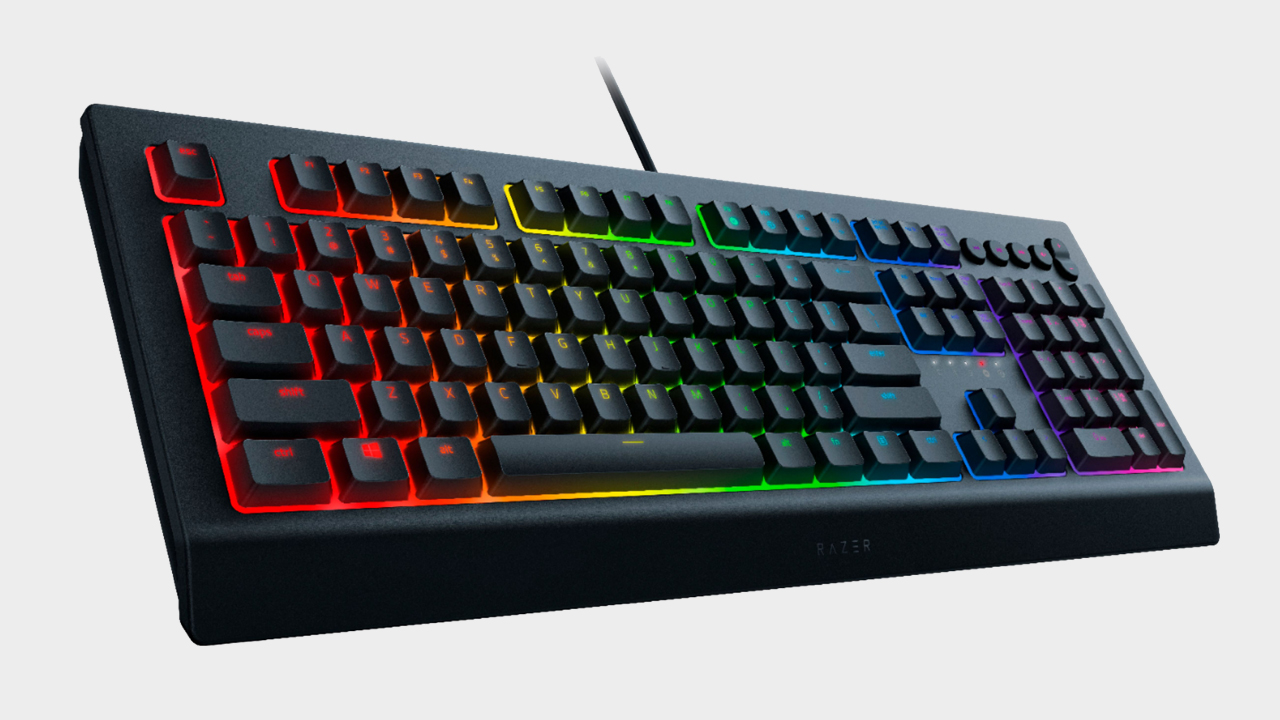

Specifications
Reasons to buy
Reasons to avoid
It's well recognized that Razer keyboards are some of the best in the business, but top end models can reach as far as $250. It's good to know that Razer also caters to the budget end of the price scale as well, with the Cynosa V2 representing the brand's best membrane keyboard.
The new per-key RGB lighting makes more of an impact. It's vibrant and eye-catching, helping the keyboard feel more expensive than it really is.
Razer Cynosa V2 review
On a wider scale, however, the Razer Cynosa V2 is perfect for those who still want in-depth RGB customization options in their deck. Other models seem to drop per-key RGB illumination in favor of zoned lighting or single color options only. However, you're still getting Razer's full Chroma support here, which means you can set each key's LED and have them match other Razer accessories to boot. That's pretty rare to find on a membrane keyboard of this price point.
This is a low profile keyboard as well, which means you're dropping some of the height in your keys. That makes for faster typing and some find it more tactile to boot. While we did notice a little creaking in our testing, we found that the speed and resistance behind each keypress was more than enough to make up for it. That low profile design goes a long way to still making this deck feel snappy and responsive, despite not offering mechanical switches.
Read more: Razer Cynosa V2 review
The best membrane keyboard for macro fans

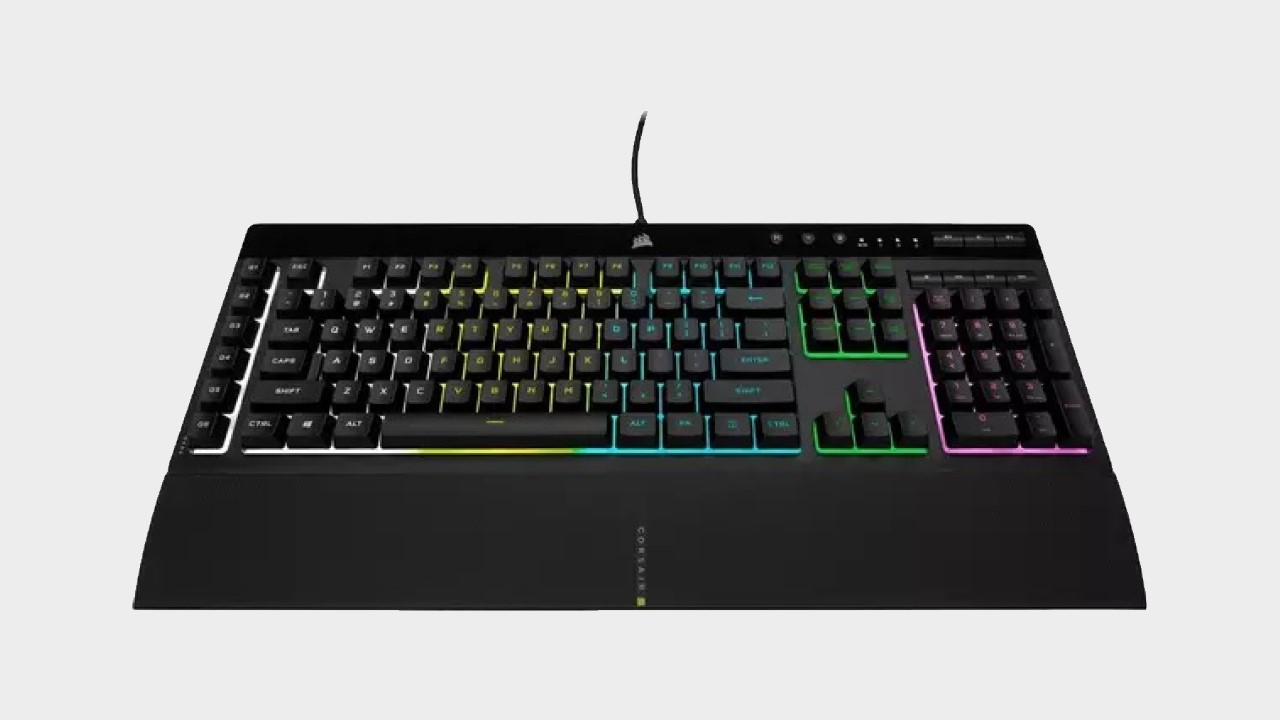
5. Corsair K55 RGB Pro
Specifications
Reasons to buy
Reasons to avoid
You don't need to sacrifice core gaming features just because you're hunting down a membrane keyboard. In fact, the Corsair K55 RGB Pro excels in offering one of the most important features of all, still in a membrane deck. That's macro programming. Many premium decks offer a whole range of macro options, from individually assignable keys to dedicated extra buttons. Where you prefer to place your macros is down to personal play style, but there's plenty of functionality baked into Corsair's entry.
You're getting six additional buttons down the left side of the keyboard here, all fully dedicated to macro controls. Not only that, but you can assign these keys on the fly, a usually premium feature, or go more in-depth with Corsair's iCue software instead.
Not only that, but the Corsair K55 RGB Pro is still a solid deck elsewhere. Some of the keys can feel a little spongey under-hand, but there's still a nice snap here overall, and a fast debounce. That's to be expected from the brand behind some of the fastest decks on the market, though. You're also getting five-zone RGB lighting, a suite of dedicated media controls, and a detachable palm rest as well.
How we test membrane keyboards
Why you can trust GamesRadar+
We test membrane keyboards in the exact same way we would test any mechanical deck. We live with every set of keys for at least two weeks - playing, working, and tinkering with each one until it becomes part of the furniture. That's when we start putting it through its paces thoroughly, with typing tests and more intense gameplay scenarios to track response times, comfort, and key-spacing (and therefore precision). Throughout this time, we're consistently checking corners, keycaps, bezels, and any additional wrist rests or riser feet for signs of wear and tear, or any durability concerns. You can find out more about how we test keyboards in the full GamesRadar+ Hardware Policy.
How to choose the right membrane keyboard
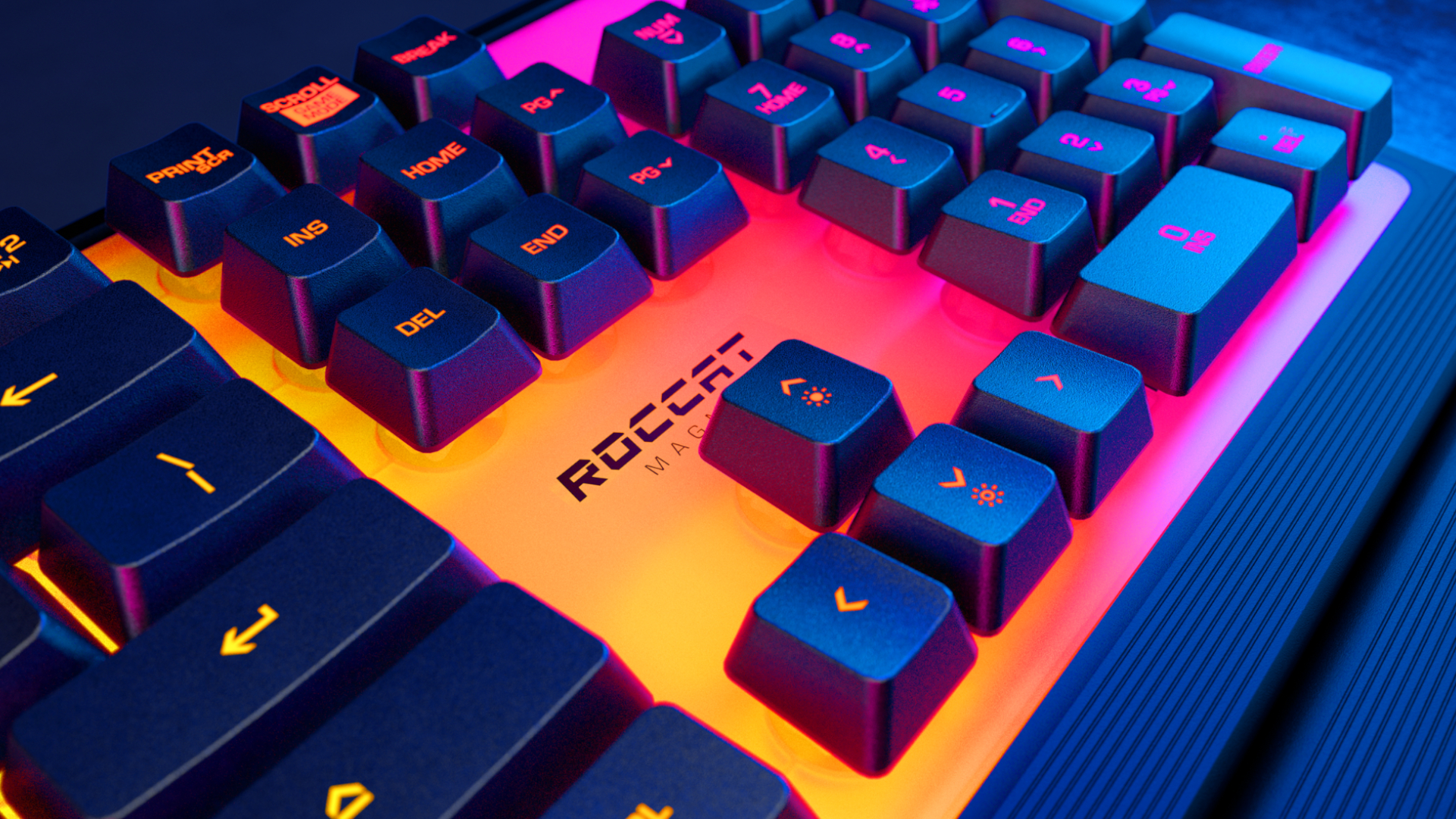
Just because you're spending less on a membrane keyboard doesn't mean you can't still expect to prioritize some features over others. These decks still come in all shapes and sizes, so whether you need a wireless option or you need extra controls on board there's still plenty to choose from.
There's less of an emphasis on switch feel in membrane keyboards over mechanical models - and more focus on extra features. I'd recommend making sure you're getting all the extra controls you need, between media playback and volume and additional macro buttons. These features are far more commonplace on membrane keyboards lower down the price scale than you'll find in mechanical decks.
It's also worth noting whether you prefer a textured surface or a smoother grip on your key caps. If the former, I'd recommend a PBT keycap - a more durable build quality that often comes with a slightly grainy feel for better precision. ABS caps are cheaper, but can become oily after longer term use.
Of course, you'll also want to make sure you're getting the right size for you. Most membrane keyboards are in a full-sized design, netting you the full suite of keys and navigation buttons. However, there are smaller TKL options up for grabs as well, offering a more compact design for wider mouse sweeps.
Membrane keyboards vs mechanical keyboards
Mechanical keyboards
- More satisfying and tactile
- N-Key rollover
- More durable
- Customizable
Membrane keyboards
- Quieter
- Cheaper
- Softer typing feel
- Sometimes include more features
Membrane keyboards are excellent if you're building a setup on a budget, but mechanical decks will offer up greater performance overall. That said, because of the additional cost of those individual switches, you may not find as many extra features like dedicated media controls, macro settings, per-key RGB lighting, or a wrist rest, in mechanical decks that cost significantly more. Still, both sides of the debate have their benefits and sacrifices, so it's worth checking out the features of each below.
Best membrane keyboards: FAQ
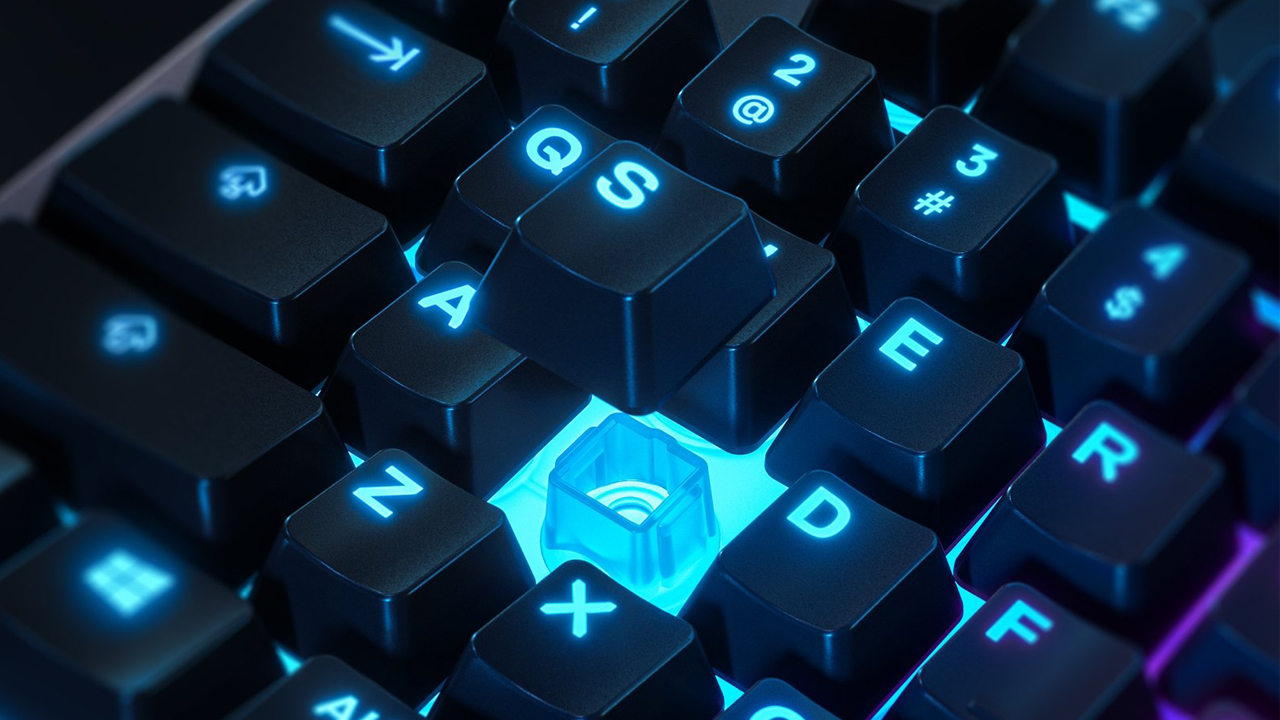
What is a membrane gaming keyboard?
A membrane gaming keyboard functions the same as a mechanical one, but the switches underneath each key are vastly different. A mechanical keyboard will rely on individual switches under each keycap for control, these are intricately designed and heavily customizable pieces of tech that offer a distinctly tactile feel and auditory response. However, a membrane deck consists of a rubber sheet placed across pads, which all register your input from the pressure of a key press.
Is a membrane keyboard good for gaming?
A membrane keyboard isn't quite as long-lasting or speedy as a mechanical model, but can still be an excellent tool for gaming. If you're playing casually and don't expect too much of a tactile response from your keypresses, these cheaper decks are still very much up to the job. You'll still find programmable keys, RGB lighting, media controls, and macro recording in these decks, as well as all the comfort and ergonomic features you'd expect in a mechanical option as well.
Is a membrane keyboard worth it?
If you're looking for a cheap gaming keyboard under $100 / £100, then the vast majority of options open to you are going to be membrane. Because of the gaming-specific features, waterproofing, and rapidly improving keypress feel, a membrane keyboard is generally going to be worth it if you're spending less than $60 / £60. You won't find a mechanical keyboard this cheap, so this is only way to net these features.
Things muddy a little around the $70/£70 - $100/£100 mark. This is where hybrid keyboards and budget-minded mechanical decks come into play. In the case of the former, you'll still find solid value in a mecha-membrane option, as long as it's cheaper than finding the same additional features on a fully mechanical keyboard.
In the case of the latter, however, it's worth weighing up what matters to you to find out if a membrane keyboard is worth it. If you're looking for a luxury typing experience and long term durability, you will want to sacrifice some of those extra features for the mechanical switches. However, if you're more concerned with fancy RGB settings, macro commands, and a wrist rest, a membrane keyboard will provide far better value.
We're also rounding up the best wireless gaming keyboards if you're after something a little more premium. Or, if all this talk of switches has you keen, we're also diving into the world of the best hot-swappable keyboards as well.
Weekly digests, tales from the communities you love, and more

Managing Editor of Hardware at GamesRadar+, I originally landed in hardware at our sister site TechRadar before moving over to GamesRadar. In between, I've written for Tom’s Guide, Wireframe, The Indie Game Website and That Video Game Blog, covering everything from the PS5 launch to the Apple Pencil. Now, i'm focused on Nintendo Switch, gaming laptops (and the keyboards, headsets and mice that come with them), PS5, and trying to find the perfect projector.


